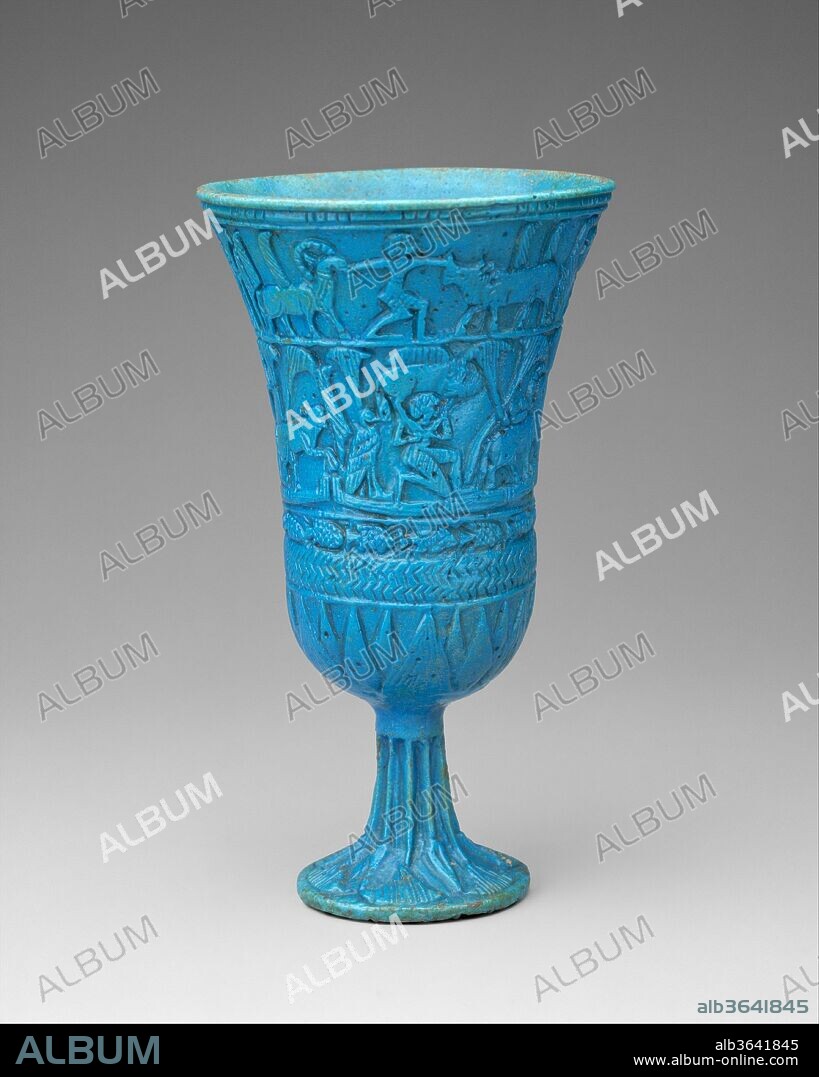alb3641845
Lotiform Chalice

|
Ajouter à une autre Lightbox |
|
Ajouter à une autre Lightbox |



Avez-vous déjà un compte? S'identifier
Vous n'avez pas de compte ? S'inscrire
Acheter cette image.
Sélectionnez l'usage:

Titre:
Lotiform Chalice
Légende:
Voir la traduction automatique
Lotiform Chalice. Dimensions: h. 14.5 cm (5 11/16 in). Dynasty: Dynasty 22-25. Date: ca. 945-664 B.C..
The fragrant blossom of the blue lotus is a common motif in all forms of Egyptian art. Because it opened its petals to the sun each morning, the flower became a symbol of creation and rebirth. During the Third Intermediate Period, faience chalices derived from the shape of the blossom and other faience delicacies were decorated with relief scenes evoking a constellation of myths having to do with the birth of the king as child of the sun god out of the watery marsh environment, and thus the renewal of the world out of the flooded land anticipated with the beginning of the Inundation at the Egyptian New Year.
Here, against a background of water filled with fish, papyrus clumps and water reeds, the marshes are evoked as a magical environment: the central register shows a man with a calf or cow over his shoulders, a huge water bird, and a horned animal all riding along in a light papyrus skiff without tipping in the least, while in the top register another man separates a horned animal and a huge bull with his bare hands.
Technique/matériel:
FAIENCE
Période:
THIRD INTERMEDIATE PERIOD
Musée:
Metropolitan Museum of Art, New York, USA
Emplacement:
Said to be from Middle Egypt, Tuna el-Gebel region; From Egypt
Crédit:
Album / Metropolitan Museum of Art, NY
Autorisations:
Taille de l'image:
3276 x 4094 px | 38.4 MB
Taille d'impression:
27.7 x 34.7 cm | 10.9 x 13.6 in (300 dpi)
 Pinterest
Pinterest Twitter
Twitter Facebook
Facebook Copier le lien
Copier le lien Email
Email
